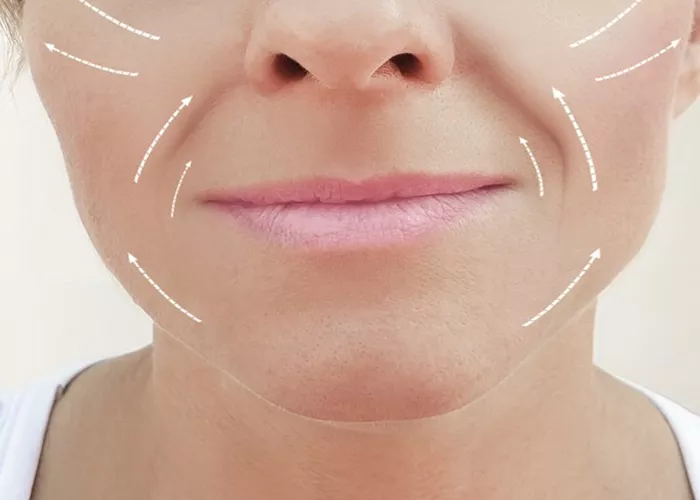Nasolabial folds, commonly referred to as smile lines, are the lines that extend from the sides of the nose to the corners of the mouth. These folds are a natural part of aging and can become more pronounced due to various factors, including sun exposure, lifestyle choices, and genetic predisposition. As we age, our skin loses collagen and elasticity, leading to deeper and more visible nasolabial folds. While they are a normal aspect of facial aging, many individuals seek ways to prevent or reduce their appearance. This article will explore effective strategies for preventing and treating nasolabial folds, providing a comprehensive guide to maintaining youthful skin.
Understanding Nasolabial Folds
What Causes Nasolabial Folds?
Nasolabial folds form due to several factors:
Aging: As we age, the skin loses collagen and elastin, which are essential for maintaining skin firmness and elasticity. This loss leads to sagging skin and deeper lines.
Sun Exposure: UV rays can damage collagen fibers in the skin, accelerating aging and contributing to the formation of wrinkles.
Lifestyle Choices: Smoking, poor diet, dehydration, and lack of sleep can all exacerbate the appearance of nasolabial folds.
Genetics: Some individuals may be genetically predisposed to develop deeper nasolabial folds.
The Role of Collagen and Elastin
Collagen is a protein that provides structure to the skin, while elastin allows it to stretch and return to its original shape. As we age, collagen production decreases significantly, leading to thinner skin that is more prone to wrinkles. Maintaining healthy levels of collagen and elastin is crucial for preventing nasolabial folds.
Prevention Strategies
1. Sun Protection
Daily Sunscreen Use: One of the most effective ways to prevent nasolabial folds is by protecting your skin from harmful UV rays. Daily application of broad-spectrum sunscreen with an SPF of at least 30 can help shield your skin from sun damage. This protection is essential even on cloudy days or when indoors since UV rays can penetrate windows.
Protective Clothing: Wearing hats and sunglasses can provide additional protection against sun exposure.
2. Healthy Lifestyle Choices
Hydration: Drinking plenty of water helps maintain skin hydration from within. Proper hydration supports skin elasticity and overall health.
Balanced Diet: A diet rich in antioxidants (fruits and vegetables), healthy fats (like avocados and nuts), and proteins (such as fish) can promote skin health. Foods high in vitamin C, such as citrus fruits, help boost collagen production.
Limit Alcohol and Sugar Intake: Excessive alcohol consumption and high sugar intake can dehydrate the skin and accelerate aging.
3. Skincare Routine
Moisturizers: Using a good quality moisturizer helps keep the skin hydrated and plump. Look for products containing hyaluronic acid or glycerin for optimal hydration.
Retinoids: Incorporating retinoids into your skincare routine can stimulate collagen production, helping to reduce the appearance of nasolabial folds over time.
Antioxidants: Skincare products containing antioxidants like vitamin C can protect against oxidative stress caused by environmental factors.
4. Facial Exercises
Facial exercises may strengthen facial muscles and improve circulation. For example:
Smile Resistance Exercise: Press your index fingers against the corners of your mouth while smiling against the resistance for several seconds.
Cheek Lifts: Smile widely while lifting your cheeks towards your eyes; hold this position for a few seconds before relaxing.
Regular practice may help tone facial muscles around the nasolabial folds.
Treatment Options
1. Topical Treatments
While prevention is key, various treatments can help minimize existing nasolabial folds:
Collagen Supplements: Oral collagen supplements may improve skin elasticity over time.
Topical Creams with Retinol or Peptides: These ingredients can enhance collagen production and improve skin texture.
2. Non-Surgical Procedures
Several non-invasive treatments are available for reducing nasolabial folds:
Dermal Fillers
Dermal fillers are one of the most popular options for treating nasolabial folds. Hyaluronic acid-based fillers are injected into the folds to restore volume and smooth out lines. Results typically last between six months to two years depending on the type of filler used.
Polynucleotides Injections
Polynucleotides are another injectable treatment that promotes collagen production by stimulating fibroblast cells in the skin. This treatment not only improves elasticity but also enhances overall skin tone.
Laser Treatments
Laser therapies such as fractional laser resurfacing can stimulate collagen production while improving skin texture. These treatments involve minimal downtime but require multiple sessions for optimal results.
Microneedling
Microneedling involves using tiny needles to create micro-injuries in the skin, promoting healing and collagen production. This treatment can enhance overall skin texture and reduce the appearance of nasolabial folds over time.
3. Surgical Options
For those seeking more permanent solutions, surgical options may be considered:
Facelift Surgery
A facelift involves removing excess skin and tightening underlying tissues to create a more youthful appearance. While this procedure addresses overall facial sagging, it can also significantly reduce nasolabial folds.
Fat Grafting
This procedure involves harvesting fat from other areas of the body (such as the abdomen) and injecting it into areas with volume loss, including nasolabial folds.
Conclusion
Preventing and treating nasolabial folds requires a multifaceted approach that combines lifestyle changes, skincare routines, non-surgical treatments, and possibly surgical interventions for those seeking significant results. By understanding the causes of these lines and implementing effective prevention strategies early on, individuals can maintain a youthful appearance for longer periods. Whether through daily sun protection or advanced cosmetic procedures, there are numerous options available tailored to individual needs. Consulting with a qualified dermatologist or aesthetic professional is essential in creating a personalized plan that addresses specific concerns regarding nasolabial folds while promoting overall skin health.
Related topic:
What causes deep nasolabial folds?
What is best for nasolabial folds?
How long does filler last in nasolabial folds?


